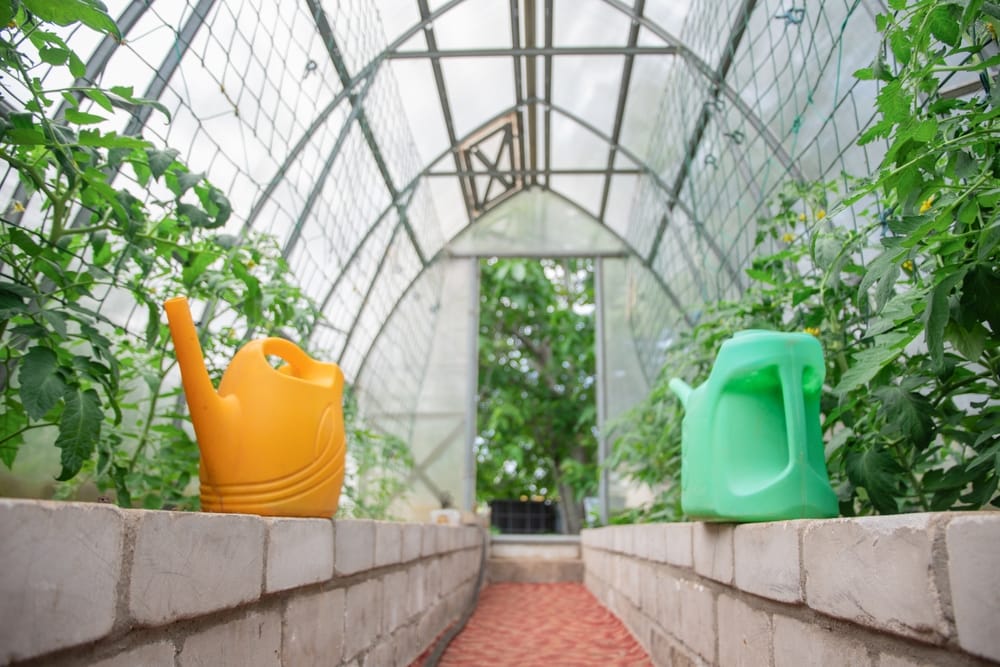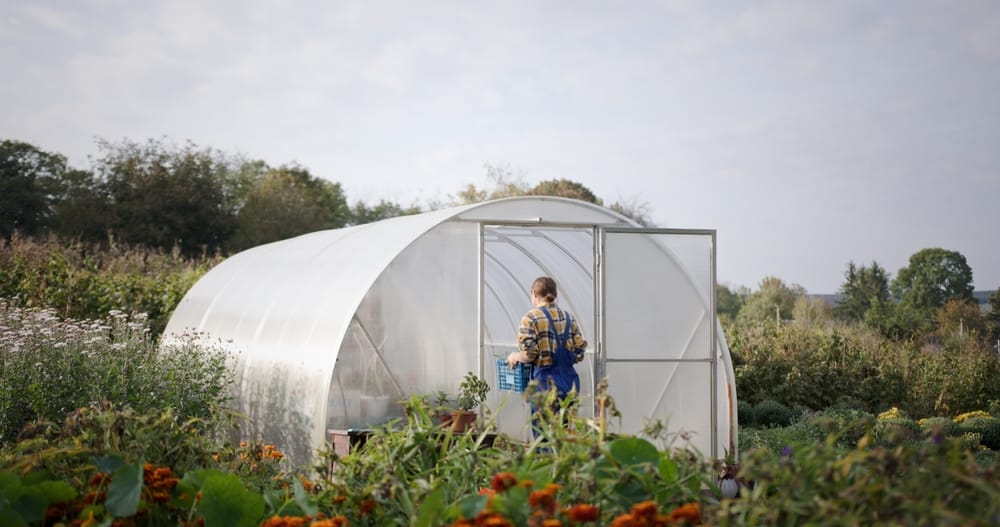
Image Source: Shutterstock.com
Winter can be a cruel season for gardeners. You’ve spent months nurturing seedlings, and just when you’re getting excited about new growth, freezing temperatures threaten to turn your greenhouse into a chilly tomb. But keeping your plants cozy doesn’t have to mean watching your energy bills spiral out of control. With a mix of creativity, simple science, and a little hands-on effort, you can maintain a toasty greenhouse without breaking the bank.
Let’s explore practical, fun, and surprisingly effective ways to protect your plants while keeping your wallet happy.
Use Thermal Mass To Store Heat
Thermal mass is basically anything that absorbs heat during the day and releases it at night. Common options include barrels of water, stone, or even concrete blocks. By placing these objects strategically around your greenhouse, you create a natural radiator that keeps temperatures stable after the sun goes down. Water is especially effective because it holds a lot of heat and warms the air gradually. With thermal mass in place, your plants will experience fewer temperature swings, which reduces stress and encourages growth.
Insulate Smartly And Strategically
Insulation doesn’t mean covering every inch in plastic wrap or blankets. Focus on problem areas first: doors, windows, and any gaps where cold air can sneak in. Bubble wrap is a surprisingly effective and affordable option that lets sunlight through while reducing heat loss. Even layering old sheets or tarps in critical spots can make a noticeable difference overnight. Proper insulation not only protects plants from frost but also reduces the need for constant heating, saving energy.
Use Passive Solar Heating Techniques
Passive solar heating harnesses sunlight without relying on electricity or fuel. Orient your greenhouse so the longest side faces south to capture maximum sunlight during the day. Dark-colored surfaces inside the greenhouse absorb heat, while reflective materials can help distribute it evenly. You can also build small thermal walls or benches painted dark to store the sun’s energy. The best part is that this method works silently, for free, and often looks quite charming once you’ve set it up.
Consider A Greenhouse Heater Wisely
Sometimes, passive solutions aren’t enough, and a small heater can make a big difference. Electric or propane heaters can work, but the key is choosing a model that’s appropriately sized for your greenhouse. Overheating a small space is both wasteful and unnecessary. Pairing a heater with a thermostat or timer prevents energy waste and ensures consistent temperatures. Even modest use can dramatically reduce the risk of frost damage without inflating your monthly bill.
Seal Drafts And Maintain Doors
Even the best heating system fails if your greenhouse leaks like a sieve. Check for cracks, gaps, and poorly fitted doors where cold air can rush in. Weatherstripping is inexpensive and easy to install, and it makes a noticeable difference in temperature stability. Even a small breeze can stress plants, so sealing drafts is one of the simplest ways to maintain warmth. A little attention to these details goes a long way toward energy efficiency and plant health.

Image Source: Shutterstock.com
Add Layered Protection For Sensitive Plants
Some plants are particularly sensitive to cold and benefit from extra layers. Row covers, frost blankets, or even simple sheets over pots can help trap heat right where it’s needed. For seedlings, using small cloches or plastic bottles as mini-greenhouses adds another layer of protection. Layering also allows you to heat only the most vulnerable plants, rather than the entire greenhouse. This targeted approach saves energy while keeping your prized plants safe.
Optimize Ventilation Without Losing Heat
It might seem counterintuitive, but proper ventilation is crucial even in winter. Without airflow, humidity builds up, increasing the risk of mold and disease. The trick is to ventilate briefly and strategically: open vents or doors during the warmest part of the day for a few minutes and close them before temperatures drop. Using automatic vent openers can help regulate airflow efficiently. Balanced ventilation protects plants while minimizing heat loss and energy use.
Use Reflective Surfaces To Maximize Light
Reflective surfaces like aluminum foil, white paint, or mylar sheets can bounce sunlight deeper into the greenhouse. This extra light warms dark corners and ensures all plants get a boost, even on short winter days. You can line walls, benches, or even containers with reflective material to spread sunlight evenly. This method works especially well when combined with thermal mass, allowing heat to accumulate naturally. A little reflection can make a surprisingly big difference in overall temperature stability.
Keep Your Greenhouse Cozy And Cost-Effective
Keeping your greenhouse warm doesn’t have to feel like a financial burden. With thermal mass, insulation, passive solar strategies, and smart ventilation, you can protect your plants through the coldest months without skyrocketing energy bills. A combination of thoughtful planning, strategic heating, and layered protection ensures your garden thrives year-round.
What techniques have you tried to keep your greenhouse warm and your energy bills low? Let us hear them below!
You May Also Like…
Greenhouse Secrets: How to Turn a Drafty Shed Into a Cozy Plant Haven
7 DIY Greenhouse Hacks for Fall Growing
How to Design and Plan Your Dream Greenhouse Or Shed
Why Moisture Levels Matter More in Autumn
Why Raised Beds Hold Warmth Longer Than Ground Soil
Leave a Reply